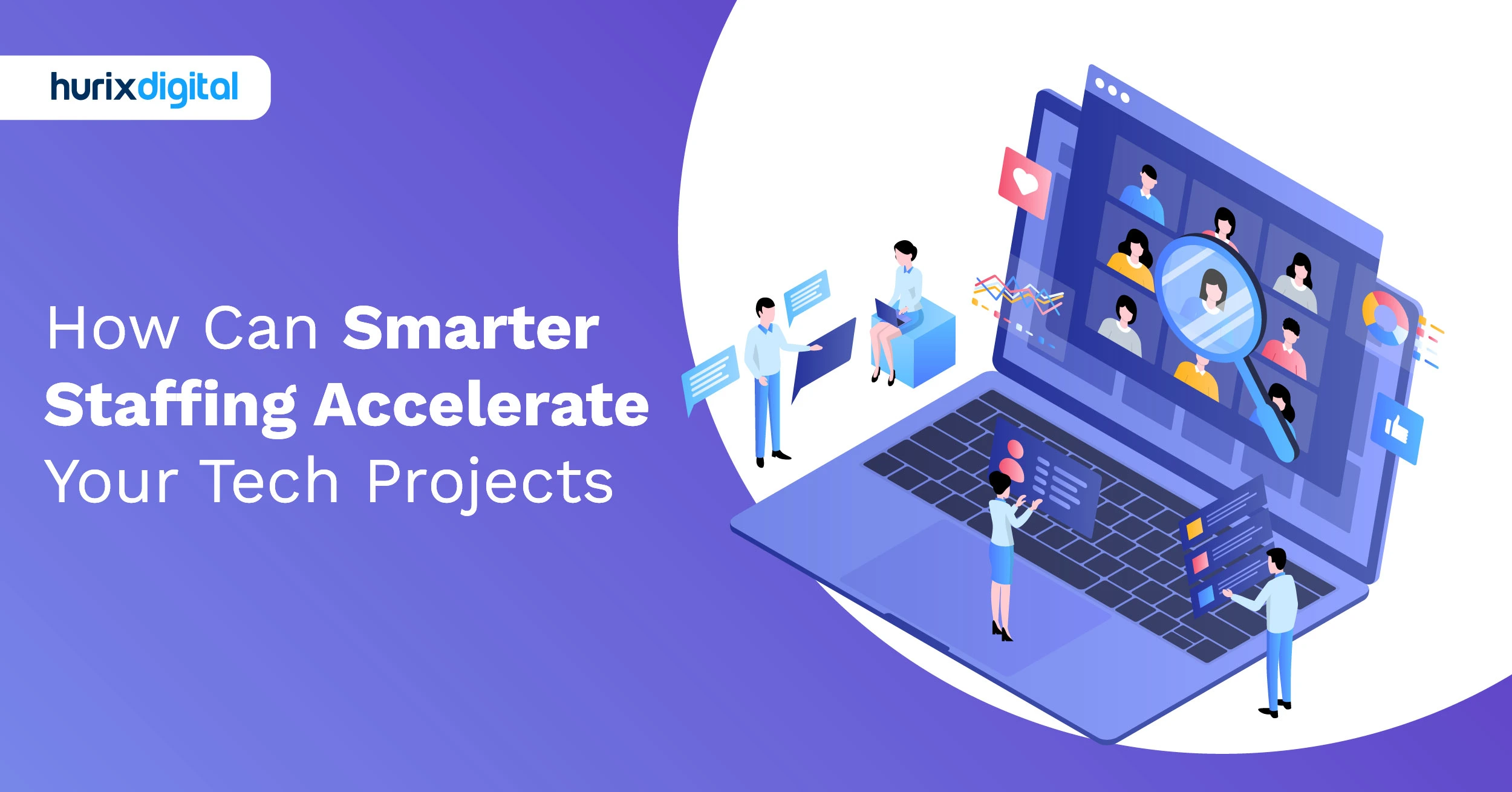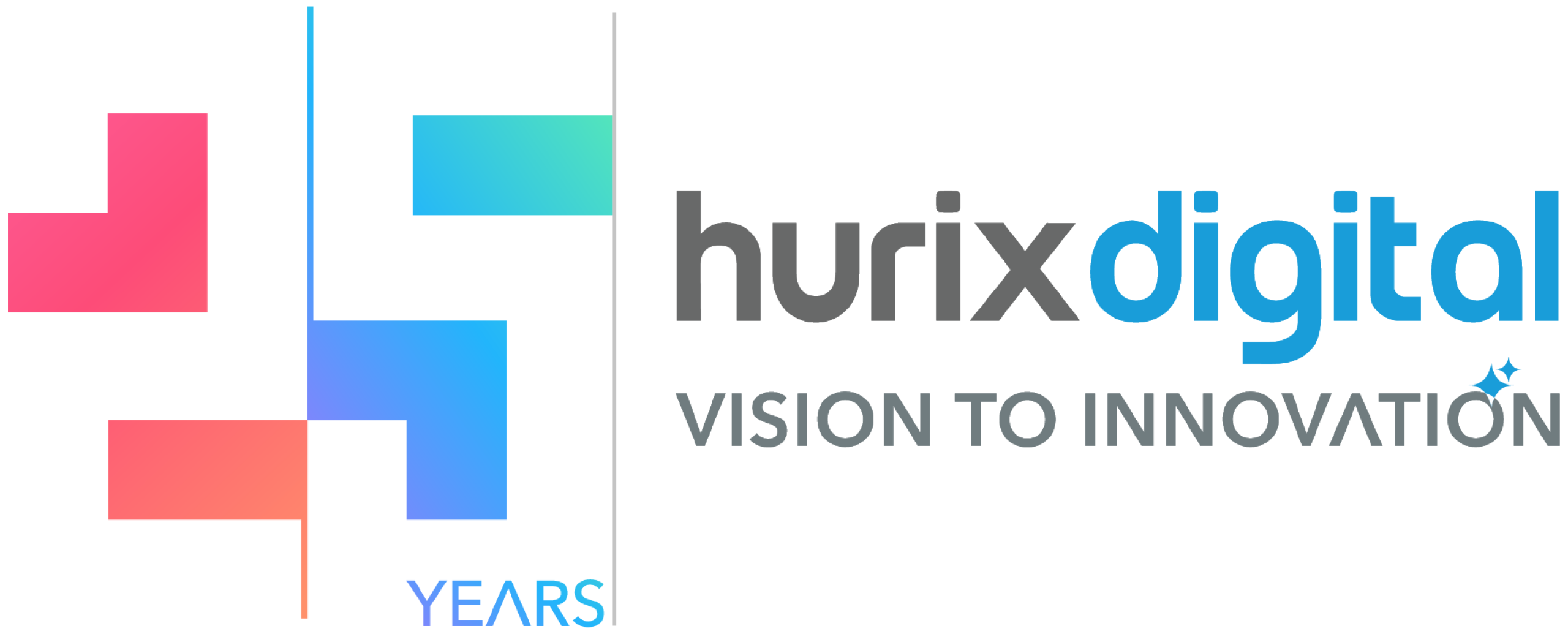
Ravi Sharma
September 9, 2025
How Can Smarter Staffing Accelerate Your Tech Projects?
Talents in technology have evolved in conversations. One thing executives will have to face in any board meeting today is the hard reality that traditional hiring practices simply are not keeping pace with technological advances. The old plan, which is to advertise jobs, interview, and hope that it will work out, does not work because the skills that you require today may be obsolete in a year and a half.
Smart organizations don’t keep up with the old ways. They’re changing the rules. Rather than treating talent acquisition as a series of permanent positions to fill, they view it as accessing the right capabilities at the right time. This shift requires rethinking fundamental assumptions about employment, expertise, and organizational structure. Some companies now maintain core teams supplemented by rotating specialists. Others build talent ecosystems where expertise flows in and out based on project needs. The most innovative create hybrid models that would have seemed impossible before the COVID pandemic hit humanity.
Table of Contents:
- How to Overcome Critical Tech Skill Gaps Efficiently?
- How Does Agile Staffing Directly Accelerate Project Delivery?
- What Strategies Future-Proof Our Tech Talent Pipeline?
- How Can Data Analytics Optimize Tech Recruitment ROI?
- How to Retain Top Tech Talent Long-Term?
- How to Scale Tech Teams Rapidly Without Compromising Quality?
- What’s the Impact of AI on Smarter Tech Staffing Strategies?
- How Do Strategic Partnerships Enhance Tech Talent Acquisition?
- How Does Leadership Foster a High-Performance Tech Culture?
- Measuring Success: What KPIs Define Smart Tech Staffing ROI?
- A Final Word
How to Overcome Critical Tech Skill Gaps Efficiently?
The typical response to skill gaps involves panic hiring followed by disappointment. Organizations identify a critical need, scramble to find someone with the exact background, then discover that technical skills alone don’t guarantee success. One of the tech clients we were in talks with learned this after hiring fourteen machine learning engineers to build their AI capabilities. Six months later, half had left because the company lacked the infrastructure and data governance necessary for them to succeed. Smart organizations also distinguish between skills worth building internally versus those better accessed externally. Training existing employees in cloud architecture might take eighteen months, but it creates lasting organizational knowledge. Conversely, the need for specialized expertise in a three-month migration project suggests that external sourcing makes more sense. The calculation involves more than just time and money. It includes knowledge retention, cultural fit, and strategic importance. The most effective approach often combines multiple strategies. Bring in external experts to address immediate needs while simultaneously developing internal talent. Establish mentorship programs that enable contractors to transfer their knowledge to permanent staff. Establish centers of excellence where skills concentrate and propagate throughout the organization.How Does Agile Staffing Directly Accelerate Project Delivery?
Traditional staffing treats every project like it needs a complete team from start to finish. Agile staffing recognizes that different phases require different expertise. The architect who designs the system might not be the best person to maintain it. The team that builds the prototype probably shouldn’t scale it to production. Matching skills to project phases sounds obvious, yet most organizations still assign fixed teams and wonder why projects stall. One healthcare client discovered this after analyzing their development cycles by partnering with us. Projects consistently bottleneck during specific phases. Database optimization always took longer than estimated. Security reviews created delays. User experience testing revealed problems requiring major rework. They had talented people, but not always the right people at the right time. The solution we delivered involved creating flexible talent pools organized by specialization. When projects hit the database optimization phase, database experts joined temporarily. Security specialists reviewed code at predetermined milestones rather than scrambling at the end. UX researchers engaged early and often instead of validating after development. Project velocity increased substantially, but more importantly, quality improved dramatically. The acceleration comes from eliminating wait states. In traditional models, generalists struggle through specialized tasks or projects pause while waiting for expert availability. Agile staffing ensures the right expertise arrives exactly when needed. It’s like having an F1 pit crew instead of one mechanic doing everything. Each specialist performs their role perfectly, then steps aside for the next expert. This choreographed expertise creates momentum that fixed teams rarely achieve.What Strategies Future-Proof Our Tech Talent Pipeline?
Future-proofing talent pipelines requires accepting that you can’t predict specific future skills. Seven years ago, prompt engineering didn’t exist. Now, companies desperately seek people who can effectively communicate with large language models. The organizations that successfully navigate these shifts focus on capabilities and adaptability rather than specific technical skills. Building learning capacity matters more than current knowledge. We helped one financial services firm restructure its entire talent strategy around this principle. Instead of hiring for specific programming languages, they seek people who’ve successfully learned multiple languages. Rather than requiring years of experience with particular tools, they value the demonstrated ability to master new technologies quickly. Their interview process includes learning challenges, where candidates must grasp unfamiliar concepts during the session itself. Partnerships with educational institutions provide early visibility into emerging skills. In addition to recruiting from universities, forward-thinking companies work with universities to shape their curricula. They sponsor research projects, provide real-world problems for student teams, and offer internships that serve as extended evaluations. We helped one of the robotics companies partner with two universities to develop specialized programs in human-robot interaction. By the time the field matured, they had already identified and recruited the top talent.How Can Data Analytics Optimize Tech Recruitment ROI?
Most companies track recruitment metrics that tell them nothing useful. Time-to-fill positions are meaningless if you hire the wrong person. Cost-per-hire is Irrelevant if they leave after six months. The data that actually matters for ROI tells a different story. Retention prediction models save millions in replacement costs. By analyzing communication patterns, project participation, and skill utilization, companies can identify flight risks months before resignation letters arrive. A gaming studio, after partnering with us, discovered that their top developers became flight risks as they hadn’t learned new technologies for six months. At our behest, they adjusted project assignments accordingly, cutting unwanted turnover by one third. Network analysis uncovers hidden recruitment channels. Observing how successful employees actually joined, not what they put on their applications, reveals surprising trends. After partnering with us, one firm discovered its best cloud architects came through security conference connections, not job boards or recruiters. They redirected recruitment spending toward conference sponsorships and technical community engagement, improving quality while reducing costs. Skills velocity tracking predicts future needs better than workforce planning. By measuring how quickly different technologies spread through projects, companies can anticipate talent needs months earlier.How to Retain Top Tech Talent Long-Term?
Retention discussions often focus on perks and compensation, missing what actually keeps technical talent engaged. The best engineers don’t leave for ping-pong tables elsewhere. They leave when learning stops, impact diminishes, or bureaucracy overwhelms innovation. Understanding these deeper motivations transforms retention from reactive scrambling to proactive strategy. Growth opportunities matter, but not in traditional career ladder terms. Technical professionals often resist management tracks that pull them away from technology. Smart companies create technical leadership paths with compensation and influence equal to management roles. Principal engineers earn director-level salaries. Distinguished technologists shape company-wide technical strategy. These parallel tracks recognize that deep technical expertise has value beyond people management. Autonomy and trust determine whether talented technologists stay or go. Nothing frustrates skilled professionals more than micromanagement or rigid processes designed for mediocrity. One startup learned this after implementing extensive code review processes that slowed deployment from days to weeks. Their senior engineers started leaving. The company eventually created different workflows based on experience levels. Senior engineers gained more autonomy while juniors received more guidance. Retention improved dramatically. Purpose and impact create emotional investment beyond transactional employment. It’s not enough for engineers to optimize advertising algorithms; they want to find meaningful solutions.How to Scale Tech Teams Rapidly Without Compromising Quality?
Scaling rapidly usually means lowering standards, unless scaling is fundamentally rethought. The traditional approach adds people linearly, hoping productivity scales proportionally. It rarely does. Communication overhead increases geometrically. Coordination complexity explodes. Quality suffers as cultural dilution accelerates. Successful scaling requires systems thinking before headcount growth. One of our e-commerce clients needed to triple its engineering capacity in six months. Instead of immediately hiring, they spent the first month establishing scalable practices. They documented architectural decisions, created coding standards, built automated testing frameworks, and established clear communication protocols. When hiring accelerated, new engineers integrated smoothly because infrastructure existed to support them. Modular team structures enable scaling without chaos. Rather than growing existing teams larger, create new small teams with clear boundaries. Each team owns specific services or features, communicating through well-defined interfaces. This cellular growth pattern maintains team cohesion while allowing organizational expansion. We helped a payments company scale from fifty to three hundred engineers using this approach. Team productivity actually increased during growth because coordination overhead remained constant within teams. Quality gates and automation become critical at scale. What one senior engineer could review personally with ten people becomes impossible with a hundred. Automated testing, continuous integration, and deployment pipelines maintain standards without human bottlenecks.What’s the Impact of AI on Smarter Tech Staffing Strategies?
AI transforms staffing in ways that vendor pitches rarely capture. Yes, algorithms can screen resumes faster than humans. That’s table stakes. The real transformation happens when AI augments human judgment throughout the talent lifecycle, from identifying needs to optimizing team composition. Skill inference reveals capabilities that traditional assessment misses. By analyzing code repositories, documentation, and project contributions, AI identifies expertise that doesn’t appear on resumes. One platform client discovered a support engineer who’d been quietly architecting solutions had skills equivalent to senior developers after taking our staffing services. Traditional assessment would never have surfaced this hidden talent. The company promoted them, avoiding external hiring while rewarding overlooked capability. AI enables dynamic team assembly based on project requirements. Instead of fixed teams tackling varied challenges, AI can suggest optimal talent combinations for specific problems. A two-day security audit might combine experts from different time zones and specializations, assembled precisely for that challenge. This granular matching increases both utilization and effectiveness. People work on problems that match their strengths rather than whatever their assigned team faces.How Do Strategic Partnerships Enhance Tech Talent Acquisition?
Strategic partnerships transcend transactional vendor relationships. Most of the firms approach staffing partners as vending machines, providing budgets and deliverables without further involvement. A real relationship is a partnership with mutual risk, investment of interest, and investment in success. The differences can be seen in the results. Co-investment models align partner incentives with client success. When staffing partners share project risk and reward, they stop optimizing for placement volume and start optimizing for candidate success. We helped one healthcare client in making partnerships where providers earn bonuses based on project delivery, not just filling positions. This shifts conversations from “we found someone with the right keywords” to “here’s how this person will help you succeed.” Knowledge partnerships provide value beyond just talent. Effective staffing partners like Hurix Digital bring market intelligence, technology insights, and process innovations from across the client base. We help you identify what’s working elsewhere and translate those lessons to new contexts. Ecosystem partnerships multiply talent access geometrically. Instead of bilateral relationships, smart companies build network effects. University partnerships feed bootcamp partnerships, which connect to professional communities, which link to staffing providers. Each node in the network increases access to talent while reducing dependence on any single source. When one channel faces constraints, others compensate. The network becomes resilient in ways individual partnerships never could.How Does Leadership Foster a High-Performance Tech Culture?
Tech leadership is more than talk and open-door policies. It is reflected in resource distribution, the decision-making process, and in day-to-day routines that demonstrate what is important. Technical credibility matters, but not how most assume. Leaders do not need to code production systems to make informed decisions and ask intelligent questions. When leaders clearly don’t grasp what their teams do, respect erodes quickly. One CEO spent six months learning Python, not to code production systems but to understand what developers actually do. That investment earned respect that no amount of leadership training could have generated. Psychological safety determines whether teams perform or merely comply. High-performance tech cultures require experimentation, which means failure must be acceptable. How leaders respond to failure signals whether psychological safety truly exists. A CTO who publicly analyzed his own role in a failed platform migration created space for honest discussion about other failures. Problems surfaced earlier. Learning accelerated. Innovation increased because people felt safe taking calculated risks. Resource allocation reveals true priorities regardless of stated values. Leaders claiming innovation matters while cutting R&D budgets fool nobody. High-performance cultures emerge when resource decisions align with stated values. This means funding experiments that might fail, investing in learning time, and accepting short-term productivity costs for long-term capability gains. Actions matter more than announcements.Measuring Success: What KPIs Define Smart Tech Staffing ROI?
Traditional staffing metrics measure activity, not impact. Smart metrics connect talent decisions to business outcomes. The difference between measuring motion and measuring progress determines whether your staffing strategy creates value or just creates busy work. Value creation metrics focus on output rather than input. Revenue per technical employee reveals productivity. Innovation metrics track new features, patents, or process improvements per team. Customer satisfaction scores linked to technical team performance show external impact. These metrics hurt sometimes because they reveal uncomfortable truths. That’s what makes them valuable. Capability development metrics indicate future potential, not just current performance. What percentage of your team learned new technologies this quarter? How many internal transfers prevented external hiring? What’s your ratio of senior engineers who mentor versus those who don’t? These leading indicators predict future performance better than backward-looking metrics. Network effects within your talent ecosystem create multiplier value. How many quality referrals do employees generate? What percentage of new hires come from strategic partnerships versus cold sourcing? How often do former employees return with enhanced skills? These network metrics reveal whether you’re building a talent community or just processing transactions. The most sophisticated measurement connects multiple metrics to reveal system dynamics. High performer turnover might seem bad until you discover they’re leaving to start companies that become your partners. Longer hiring cycles might indicate improved selectivity rather than process problems. Understanding these connections requires thinking beyond simple scorecards to see how talent strategies create compound value over time.A Final Word
The organizations winning the tech talent war aren’t necessarily the biggest spenders or the most prestigious brands. They’re the ones who’ve fundamentally reconsidered how human capability creates competitive advantage in an accelerating technological landscape. They’ve moved beyond viewing staffing as filling positions to accessing capabilities. They understand that flexibility beats rigidity when change is constant. They recognize that building learning capacity matters more than current skills when the future is unpredictable. Smart staffing for tech acceleration isn’t about working harder at traditional approaches. It’s about working differently. Combining permanent and fluid talent. Building ecosystems rather than just teams. Using data to drive decisions while maintaining human judgment. Creating cultures where excellence thrives rather than just survives. Transform your talent strategy from constraint to accelerator with Hurix Digital’s Talent as a Service solutions—unlock the expertise you need, exactly when you need it. Connect today.
Vice President & SBU Head –
Delivery at Hurix Technology, based in Mumbai. With extensive experience leading delivery and technology teams, he excels at scaling operations, optimizing workflows, and ensuring top-tier service quality. Ravi drives cross-functional collaboration to deliver robust digital learning solutions and client satisfaction
 Upcoming Masterclass | Build an Army of Brand Evangelists using Training & Development | November 20th, 8:30 AM PDT | 11:30 AM EDT | 10:00 PM IST
Upcoming Masterclass | Build an Army of Brand Evangelists using Training & Development | November 20th, 8:30 AM PDT | 11:30 AM EDT | 10:00 PM IST
